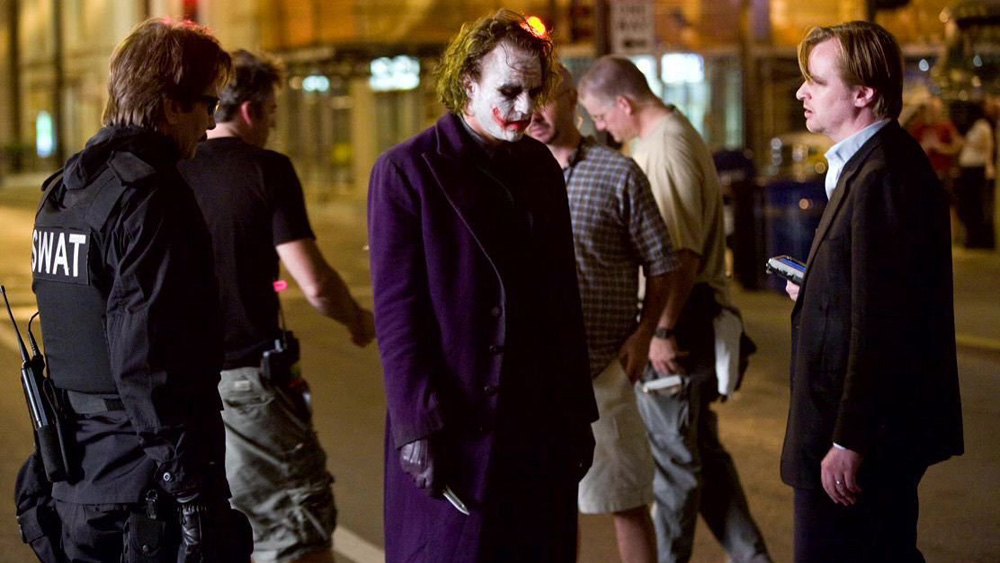Christopher Nolan’s ‘Dark Knight’ Changed Movies, and the Oscars, Forever
By Kristopher Tapley
LOS ANGELES (Variety.com) – In late 2008, Christopher Nolan’s “The Dark Knight” — a zeitgeist-infused superhero sequel that would come to be widely regarded as the best in the genre — was on a crash-course with major Oscar recognition. Nominations from the producers, directors, and writers guilds, as well as a monster domestic box office haul north of $500 million (back when just one other film, “Titanic,” had managed it), only firmed up expectations.
Then, “The Reader” happened. The Stephen Daldry drama, steeped in Oscar-friendly Holocaust trappings, was muscled into the race by Harvey Weinstein at a time when the now-disgraced mogul’s Miramax glory days were fast-becoming a distant memory, and the awards outlook for his newly formed Weinstein Co. was increasingly dim. (Movies like “Mrs Henderson Presents” and “Bobby” had failed to connect with voters.) “The Reader” nailed down nominations for best picture, director, and adapted screenplay, effectively boxing out Nolan’s critically acclaimed blockbuster in the top fields.
It was the last time the best picture category would be limited to five nominees.
Just four months after the Oscars of February 2009 concluded — “Slumdog Millionaire” swept the proceedings, dropping only the sound editing prize, to “” — the Academy of Motion Picture Arts and Sciences made its first in a long string of consequential decisions that would take it through the next decade. The best picture category was expanded to 10 nominees in the hopes of providing room for popular yet still respected films like “The Dark Knight,” and perhaps drive more viewers to the show as a result.
An oft-repeated notion about how the idea came about is that the 2009 telecast director, Bill Condon, suggested it in his postmortem with the Academy. It wasn’t a new idea after all; from 1931 to 1943, the organization had employed this more inclusive paradigm. Why not give it another shot?
The first year was largely considered a success. Hits like “The Blind Side,” “District 9,” and “Up” (the first animated film nominated for best picture in nearly two decades) found purchase in the field. But so, too, did independent darlings like “An Education” and “A Serious Man,” making for an interesting balance.
Further embossing the nature of that spread was the best-picture showdown between “Avatar” (the highest-grossing best picture nominee of all time) and “The Hurt Locker” (ultimately, the lowest-grossing winner of the modern era).
The next year, “Toy Story 3” excepted, independent films dominated the landscape, from “127 Hours” to “The Kids Are All Right” to “Winter’s Bone.” That wasn’t quite what the Academy had in mind, so a new, still-confusing and overwrought process that would yield anywhere from five to 10 nominees was implemented, supposedly in the hopes of preventing too small a contingent from rallying a film to a nomination.
Nolan’s film won one other Oscar, for late actor Heath Ledger’s instantly iconic performance as the Joker. It was nominated for a total of eight Academy Awards, most of them throughout the craft categories. But this, the first significant shake-up of the best picture category in 60 years, would be its ultimate Oscar legacy.
We’re about to enter our 10th year of this era. Along the way, though we can’t know for sure, movies like “Amour,” “Beasts of the Southern Wild,” “Call Me by Your Name,” “Hell or High Water,” “Her,” “Moneyball,” “Room,” and “Whiplash” would presumably come to owe their best picture recognition, in part, to a Batman movie. The irony is that Academy brass would no doubt have rather seen audience favorites such as “Gone Girl,” “Skyfall,” “Star Trek,” “Star Wars: The Force Awakens,” and “Wonder Woman” in the mix more often than they have been, and yet few seem to realize how that little tweak two years into the new paradigm is partly responsible for keeping them at bay (for reasons too complicated to get into here — one column at a time).
Nolan himself would wait another nine years before being nominated by the Academy’s directors branch, which also passed him over in 2010 for “Inception.” That recognition finally came last year, for “Dunkirk,” after his work in the space had definitively impacted large-scale filmmaking.
And that, by the way, is undeniable. Look at the recent aesthetic directions of the James Bond, “Mission: Impossible,” and “Planet of the Apes” franchises. And Imax photography in narrative films, an experiment when Nolan dabbled in it for a handful of scenes, is now much more widely utilized. The echoes of “The Dark Knight” can be found in the very fabric of the modern blockbuster landscape.
Similarly, as it pertains to Hollywood’s biggest night, the wake of Nolan’s Caped Crusader continues to be felt. Hope springs eternal for movies that would not have found footing in a best picture category that was for years exclusive and closed off. Whether the expansion has marked a diminishing of the honor, however, is a debate that still rages, witnessed by former Academy governor Bill Mechanic’s recent dismissal of the breed of cinema that has been recognized in the decade since “The Dark Knight.”
Regardless, Nolan’s film exacted change. It moved the needle. It far outlived its last box office dollar and the closing curtain of Oscar night. And it will continue to inspire new generations of filmmakers, awed by what was achieved. In that and many other ways, “The Dark Knight” is eternal.

